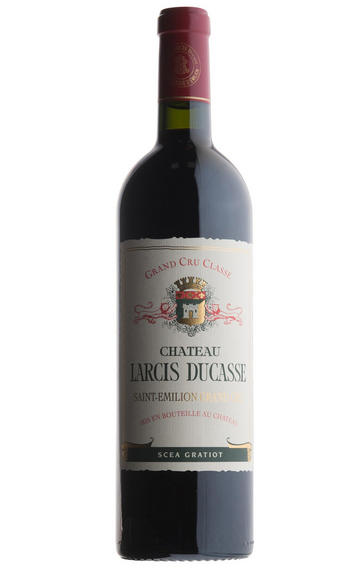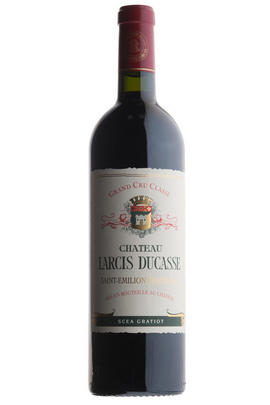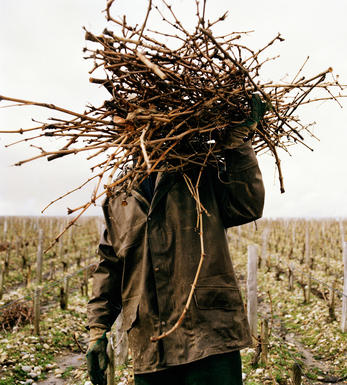
2021 Château Larcis Ducasse, St Emilion, Bordeaux

Critics reviews
The 2021 Larcis Ducasse was picked from 29 September until 11 October at a respectable 34hL/ha, representing 65% of the total production this year. It has an almost gentle, atypically understated bouquet with brambly red fruit, wilted rose petal and light undergrowth scents. The palate is linear and structured, far removed from the occasionally opulent Larcis Ducasse of warming seasons. Quite saline in the mouth, this is distinguished by a liberal sprinkling of cracked black and Spanish Padron pepper towards the finely persistent finish. Classy and full of character.
Drink 2028 - 2048
Neal Martin, vinous.com, (May 2022)
Not giving too much away yet but there are layers here, and plump if restrained fruit, lots of white pepper, blueberry, blackcurrant. We are still in sculpted, subdued territory, but this is luscious and finessed and has all the elements to plump out over ageing. Clear salinity, oyster shell and crushed rocks. To achieve this, they chose not to use their plots right on the austere limestone plateau, but selected from the richer clay 'molasses de fronsadais' on the slopes, and also not from the sandier areas at the bottom of the slopes. 34hl/h yield, 65% 1st wine a little less than usual, 50% new oak. Harvest September 29 to October 11. Tasted three times, excellent quality.
Drink 2026 - 2042
Jane Anson, janeanson.com (May 2022)
Deep crimson to the rim. Aromatically discreet but fresh. Lovely texture of tannin, the fruit gently seductive. Less punch than some years but charm and finesse. Clean, if a little dry on the finish.
Drink 2027 - 2038
James Lawther, jancisrobinson.com (May 2022)
A blend of 86% Merlot and 14% Cabernet Franc, the 2021 Larcis Ducasse wafts from the glass with aromas of cherries, blackberries, violets, warm spices and forest floor. Medium to full-bodied, deep and attractively layered, with lively acids and a chalky, saline finish, this is a terrific effort. Nicolas Thienpont and his team were extremely selective this year, and the grand vin derives almost entirely from the slope, without much contribution from the plateau above.
William Kelley, Wine Advocate (Apr 2022)
This is medium-to full-bodied with firm, silky tannins. Already has an expressive nose of blackcurrants, blackberries, white pepper, cloves and black licorice. Salty minerality. Fresh and fine. Spicy finish. Lengthy, too. 86% merlot and 14% cabernet franc.
James Suckling, jamessuckling.com (May 2022)
About this WINE

Chateau Larcis Ducasse
Traditionally Ch. Larcis Ducasse, a St Emilion Grand Cru Classé, was regarded as a property with exceptional terrior but a constant underperformer. This has changed, mainly thanks to the talents of a new winemaking team headed up by Nicolas Thienpont (of Ch. Pavie Macquin repute) and Stephane Derenoncourt (the mercurial 'flying wine consultant') who have managed to unlock the potential of this sleeping giant.
The estate is located on one of Bordeaux's finest strips of terroir - the Cote Pavie in St Emilion. Here, this 25-acre property abuts the 1er Grand Cru Classé Ch. Pavie estate. The vines are planted on an eclectic range of soils - alluvial sand deposits, clay, chalk and limestone. The vines, as one would expect for that part of the world, are predominately Merlot (some 75%) Cabernet Franc and Cabernet Sauvignon.
The new winemaking team arrived in 2002 and since then, the wines have gone from strength to strength. Look out especially for the 2005 Ch. Larcis Ducasse (98/100 Parker), 2006 Ch. Larcis Ducasse (91-94 Parker) and 2007 Ch. Larcis Ducasse (92-94 Parker), as these are the manifestation of all the hard work undertaken at the château over recent years.

St Émilion
St Émilion is one of Bordeaux's largest producing appellations, producing more wine than Listrac, Moulis, St Estèphe, Pauillac, St Julien and Margaux put together. St Emilion has been producing wine for longer than the Médoc but its lack of accessibility to Bordeaux's port and market-restricted exports to mainland Europe meant the region initially did not enjoy the commercial success that funded the great châteaux of the Left Bank.
St Émilion itself is the prettiest of Bordeaux's wine towns, perched on top of the steep limestone slopes upon which many of the region's finest vineyards are situated. However, more than half of the appellation's vineyards lie on the plain between the town and the Dordogne River on sandy, alluvial soils with a sprinkling of gravel.
Further diversity is added by a small, complex gravel bed to the north-east of the region on the border with Pomerol. Atypically for St Émilion, this allows Cabernet Franc and, to a lesser extent, Cabernet Sauvignon to prosper and defines the personality of the great wines such as Ch. Cheval Blanc.
In the early 1990s there was an explosion of experimentation and evolution, leading to the rise of the garagistes, producers of deeply-concentrated wines made in very small quantities and offered at high prices. The appellation is also surrounded by four satellite appellations, Montagne, Lussac, Puisseguin and St. Georges, which enjoy a family similarity but not the complexity of the best wines.
St Émilion was first officially classified in 1954, and is the most meritocratic classification system in Bordeaux, as it is regularly amended. The most recent revision of the classification was in 2012

Merlot/Cabernet Franc
Merlot and Cabernet Franc are grape varieties commonly used in Bordeaux-style blends, particularly in the Bordeaux region of France. When these two grapes are blended, they can create a wine that combines the best characteristics of each variety.
Merlot is known for its smoothness, soft tannins, and ripe fruit flavours. It often contributes black cherry, plum, and chocolate flavours to the blend. The grapes are relatively easy to grow and ripen earlier than other Bordeaux varieties, making them versatile for blending.
Cabernet Franc, on the other hand, adds structure, depth, and complexity to the blend. It typically brings aromas of red fruits such as raspberry and strawberry, along with herbal notes like bell pepper and tobacco. These grapes have thinner skins and can be more challenging to cultivate, requiring specific growing conditions to reach their full potential.
When Merlot and Cabernet Franc are combined, the result is a well-balanced wine with various flavours and aromas. The blend often exhibits a Bordeaux wine's medium to full body, along with a smooth texture and moderate tannins. The specific flavour profile can vary depending on the proportions of each grape in the blend and the terroir and winemaking techniques employed.


Buying options
Add to wishlist
Description
The 2021 Larcis Ducasse was picked from 29 September until 11 October at a respectable 34hL/ha, representing 65% of the total production this year. It has an almost gentle, atypically understated bouquet with brambly red fruit, wilted rose petal and light undergrowth scents. The palate is linear and structured, far removed from the occasionally opulent Larcis Ducasse of warming seasons. Quite saline in the mouth, this is distinguished by a liberal sprinkling of cracked black and Spanish Padron pepper towards the finely persistent finish. Classy and full of character.
Drink 2028 - 2048
Neal Martin, vinous.com, (May 2022)
wine at a glance
Delivery and quality guarantee